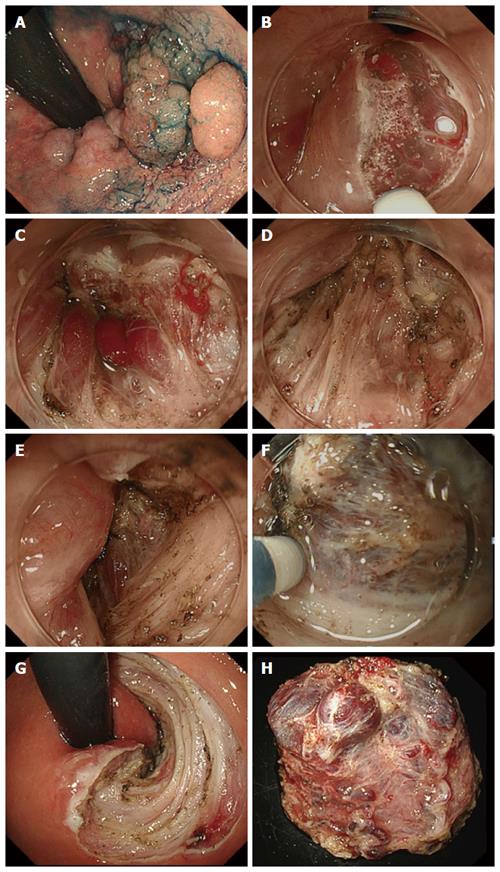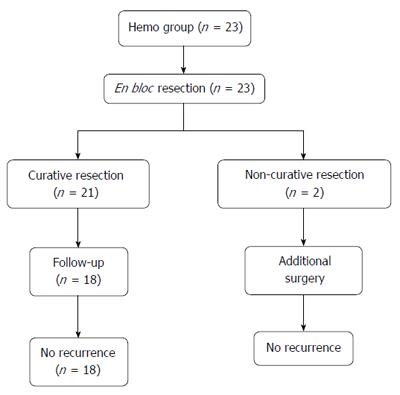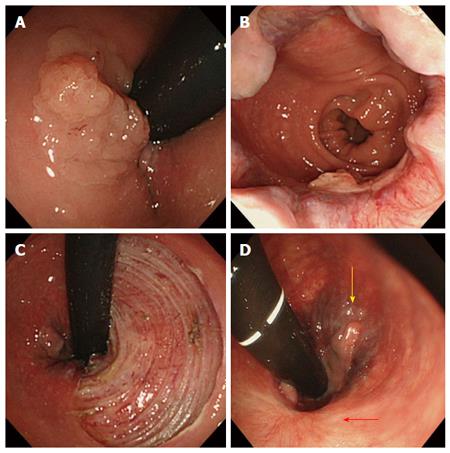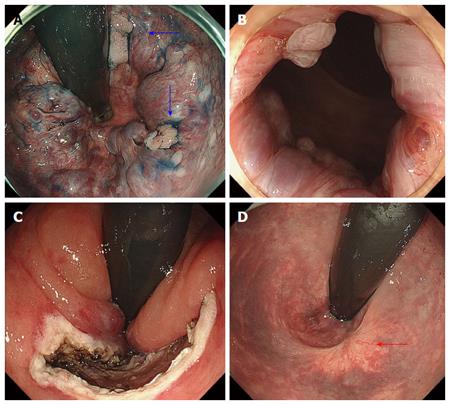Copyright
©The Author(s) 2016.
World J Gastroenterol. Jul 21, 2016; 22(27): 6268-6275
Published online Jul 21, 2016. doi: 10.3748/wjg.v22.i27.6268
Published online Jul 21, 2016. doi: 10.3748/wjg.v22.i27.6268
Figure 1 Endoscopic submucosal dissection for lower rectal lesion with hemorrhoids.
A: The laterally spreading tumor granular type (nodular mixed type) with hemorrhoids located in the lower rectum and expanding to half of the lumen; B: A shallow mucosal incision was performed and the vessels were exposed while inflicting as little damage as possible; C: The exposed vessels were coagulated using hemostatic forceps; D: The submucosal layer is tightly connected with submucosal muscle strands; E: Dissociation of submucosal muscle strands completely; F: The submucosal dissection was performed just above the muscularis propria layer; G: The ulcer floor after ESD; H: The resected specimen with many vessels.
Figure 2 Flow chart of patients who underwent endoscopic submucosal dissection for lower rectal lesions with hemorrhoids.
Figure 3 Endoscopic submucosal dissection for lower rectal lesions with hemorrhoids.
A, B: The laterally spreading tumor granular type (nodular mixed type) with hemorrhoids located at the lower rectum expanding to half of the lumen; C: The ulcer floor after endoscopic submucosal dissection (ESD); D: Hemorrhoid was partially improved (1 year after ESD). Yellow arrow indicates remnant hemorrhoids and red arrow indicates ESD scar.
Figure 4 Endoscopic submucosal dissection for lower rectal lesions with hemorrhoids.
A, B: Two 0-IIa lesions (blue arrows) located on the hemorrhoids; C: The ulcer floor after ESD; D: Complete recovery from hemorrhoids was achieved (6 mo after ESD). Red arrow indicates ESD scar.
- Citation: Tanaka S, Toyonaga T, Morita Y, Hoshi N, Ishida T, Ohara Y, Yoshizaki T, Kawara F, Umegaki E, Azuma T. Feasibility and safety of endoscopic submucosal dissection for lower rectal tumors with hemorrhoids. World J Gastroenterol 2016; 22(27): 6268-6275
- URL: https://www.wjgnet.com/1007-9327/full/v22/i27/6268.htm
- DOI: https://dx.doi.org/10.3748/wjg.v22.i27.6268












